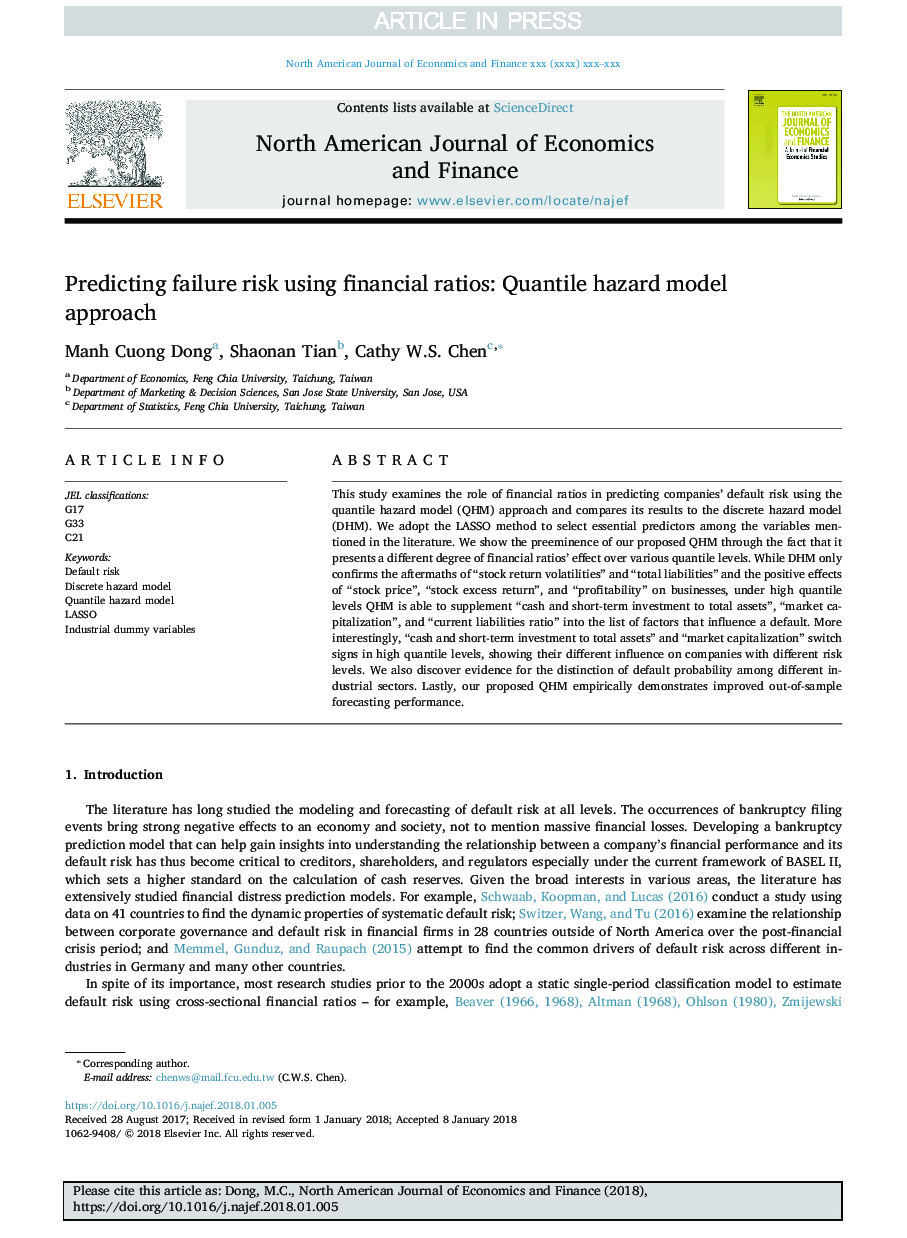| Article ID | Journal | Published Year | Pages | File Type |
|---|---|---|---|---|
| 7373884 | The North American Journal of Economics and Finance | 2018 | 17 Pages |
Abstract
This study examines the role of financial ratios in predicting companies' default risk using the quantile hazard model (QHM) approach and compares its results to the discrete hazard model (DHM). We adopt the LASSO method to select essential predictors among the variables mentioned in the literature. We show the preeminence of our proposed QHM through the fact that it presents a different degree of financial ratios' effect over various quantile levels. While DHM only confirms the aftermaths of “stock return volatilities” and “total liabilities” and the positive effects of “stock price”, “stock excess return”, and “profitability” on businesses, under high quantile levels QHM is able to supplement “cash and short-term investment to total assets”, “market capitalization”, and “current liabilities ratio” into the list of factors that influence a default. More interestingly, “cash and short-term investment to total assets” and “market capitalization” switch signs in high quantile levels, showing their different influence on companies with different risk levels. We also discover evidence for the distinction of default probability among different industrial sectors. Lastly, our proposed QHM empirically demonstrates improved out-of-sample forecasting performance.
Keywords
Related Topics
Social Sciences and Humanities
Economics, Econometrics and Finance
Economics and Econometrics
Authors
Manh Cuong Dong, Shaonan Tian, Cathy W.S. Chen,
